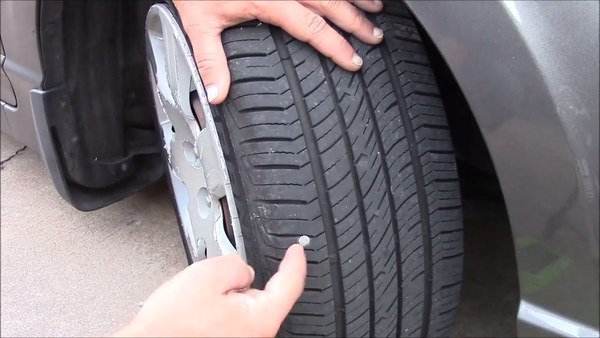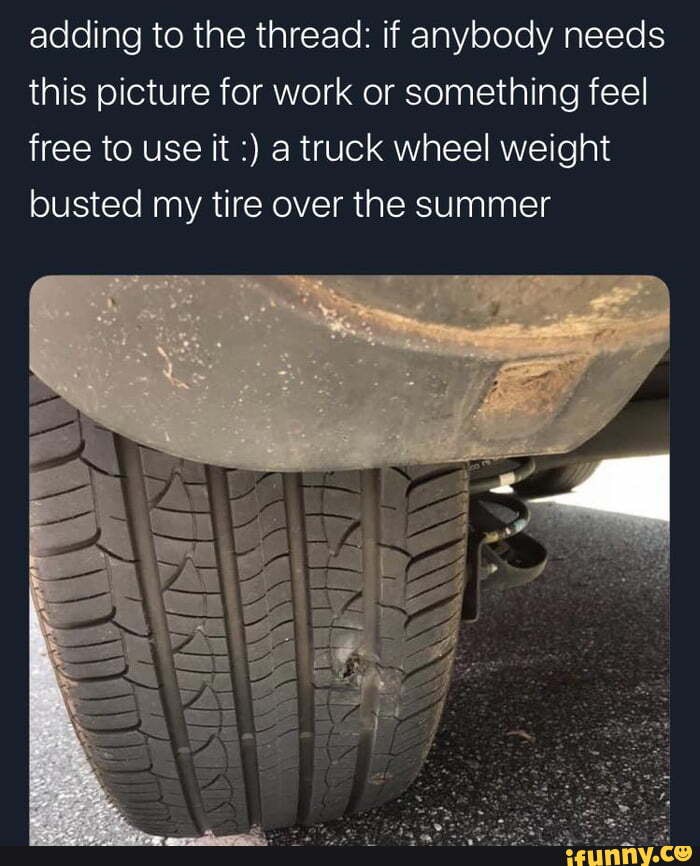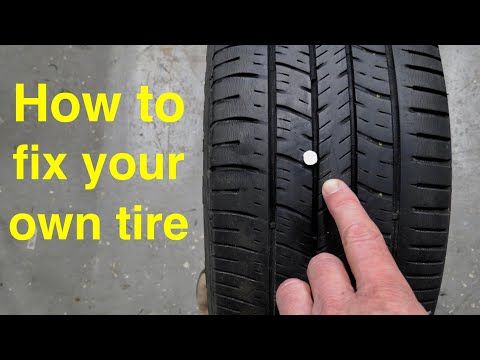Your tires are where the rubber meets the road – literally – when it comes to the safety and performance of your car. That means, if your tire is leaky, you could be putting your safety at risk.
A leaky tire causes low tire pressure, which can decrease fuel economy, and put you at risk for a blowout. It also decreases the ability of your car to handle properly, making it more difficult to respond to emergency situations or drive in inclement weather.
In this article, we’ll discuss how you can diagnose and fix slow tire leaks. Don’t just ignore that low pressure sensor – check out this guide!
The Most Common Causes Of Slow Tire LeaksThere are three common issues that cause slow tire leaks. Let’s discuss each one of them now.
If your valve stem is damaged, there will be a slow and constant leak. This leak could come from either the body of the valve, or the base of the valve, where it meets the tire.
Contrary to popular belief, puncture damage usually doesn’t lead to an immediate flat tire or blowout, in most cases. This is because the object usually remains lodged in the rubber, preventing air from leaking quickly.
There are a few ways you can diagnose a slow tire leak
 If one of your tires seems perpetually under inflated, chances are you have a leak.
If one of your tires seems perpetually under inflated, chances are you have a leak.If you have a slow tire leak, you’ll want to have it repaired professionally as soon as possible. In some cases, you may want to keep a tire plug or patch kit in your vehicle. These kits are easy to use, and can keep your tire inflated until you bring it to a professional tire repair shop.
To permanently fix a tire leak caused by a puncture, you will need a “plug and patch”. This method of repair involves removing the tire from the wheel, and placing a combination plug and patch on the tire.
If your leak is caused by a faulty valve, you may need to replace it or your tire. Leaks caused by a damaged mounting surface may require you to replace the entire wheel.
Leaks caused by a damaged mounting surface may require you to replace the entire wheel.
If you need to repair a tire damaged by a puncture, or you think your valve or mounting surface may be damaged, we can help!
Schedule your appointment on Ride Time today, and come to our service centre now in Winnipeg, to make sure you stay safe on the roads!
A slow tire leak is more than just a nuisance. A leak can lead to low tire pressure. Not to mention, prolonged running on an underinflated tire can lead to more extensive tire damage or even cause a dangerous blowout.
If you’re experiencing a slow leak, here are some things to look for:A tire puncture: It is a common misconception that a puncture will cause the tire to immediately go flat. However, in many cases the object that caused the puncture remains lodged in the tire and prevents the air from leaking out quickly. As with all tire leaks, it is important not to ignore a puncture. Eventually to object will either wear down and/or work its way out of the tire. For more on this read our article How to Repair a Tire with a Safe, Permanent Fix.
As with all tire leaks, it is important not to ignore a puncture. Eventually to object will either wear down and/or work its way out of the tire. For more on this read our article How to Repair a Tire with a Safe, Permanent Fix.
Wheel damage: Another common cause for slow tire leaks is damage to the area where the tire bead meets the rim. This type of damage is typically cause by the driver hitting the curb, taking a speed bump at high speeds OR those dreaded potholes! The impact deforms the wheel’s metal surface which may cause the tire to pull away from the mounting surface of the wheel.
Valve stem damage: The third most common cause for slow tire leaks is worn out or damaged valve stems. Time, use and exposure to elements can cause your valve stems to wear out and cause leaks.
Diagnosing your tire leak:
If your vehicle is equipped with TPMS, you will know right away if you have a leak. If the sensor light on your dashboard goes off, you inflate all the tires back to proper pressure and the light goes back on a few days later – you likely have a leak. If your vehicle does not have TPMS, its important to check your tire pressure regularly.
If your vehicle does not have TPMS, its important to check your tire pressure regularly.
Once you’ve identified that you have a leak, use TECH Chek to locate the source of your leak. Simply spray the product all around the tire. Where the surface of the tire begins to bubble is likely the source of your leak.
It’s important to have your tire diagnosed by a professionally trained tire shop or mobile tire repair service as soon as possible. In the case of a puncture, you may want to use a tire repair kit to keep your tire properly inflated until you can have it serviced. The leak should then be permanently fixed using a proper tire repair consisting of a cured rubber stem and repair unit.
If the leak is caused by a damaged valve, a trained tire technician can typically replace the valve at a minimal cost. In some cases, however, the tire may need replaced.
If the leak is caused by a damaged wheel, a tire technician may be able to reseat and seal the tire using a bead sealer. However, if the damage to the wheel is significant, unfortunately that means you may need to replace the wheel itself.
However, if the damage to the wheel is significant, unfortunately that means you may need to replace the wheel itself.
To read more about the types of damage that can and cannot be repaired, click here!
Slow leaks can cause your tire to lose air and eventually fail. There are several ways to fix a slow tire leak. You can use a piston, a patch kit, or an air compressor to fix the leak.
To fix a slow leak with a piston:
To fix a slow leak with a fix kit:
 If there are several pieces of adhesive tape, peel them off one at a time so that they do not stick together during subsequent installation (this will help to avoid twisting the thread). Apply duct tape to the area where you think the air is leaking (usually near the valve stem). Leave enough excess around the edge so that it can be easily removed later if needed (you may need 2-3 applications depending on the size/shape of the area).
If there are several pieces of adhesive tape, peel them off one at a time so that they do not stick together during subsequent installation (this will help to avoid twisting the thread). Apply duct tape to the area where you think the air is leaking (usually near the valve stem). Leave enough excess around the edge so that it can be easily removed later if needed (you may need 2-3 applications depending on the size/shape of the area). There are several different ways to fix a slow leak in a tire. One way is to use a patch kit. The patch kit comes with glue, sealant, and sometimes sandpaper. paper to smooth out any bumps or ridges on the tire surface. Finally, you can apply pressure with your hands to make sure the sealant is firmly on the tire surface. Another way to fix a slow leak in a tire is to replace the entire tire. This is usually only necessary if if the leak is severe or continues for a long time. In most cases, the problem is solved by replacing just one tire. If none of these methods work, you may need to take the car to an auto repair shop for further inspection and repair.
If none of these methods work, you may need to take the car to an auto repair shop for further inspection and repair.
There are a few things you can do to fix a slow tire leak. The first thing to do is to check the air pressure in the tire. You can also try using a plunger to press down on the sidewall of the tire and see if the fluid comes out. If none of these methods work, you may need to replace the tire.
There are several ways to fix a slow leak in a tire. You can try a patch kit, inflate the tire with an air compressor, or replace the tire.
If you are experiencing a slow leak on one of your tires, it is important to take action as soon as possible. power when you go through small bumps or puddles, it might be time to change your tire.
Here are some tips for fixing a slow tire leak:
 This will help seal the hole in the tire and stop the flow of air and fluid. You have to be careful when using this approach - make sure you don't puncture any other parts of the tire while you're repairing it!
This will help seal the hole in the tire and stop the flow of air and fluid. You have to be careful when using this approach - make sure you don't puncture any other parts of the tire while you're repairing it! There are several things you can do to try and fix a slow tire leak. First, check the air pressure in the tire. or debris that may be blocking the airflow. Finally, if all these measures fail to resolve the issue, you may need to replace the tire.
There are a few things that can cause a tire to slowly leak air. One of the most common causes is a slow puncture. As the tire starts to deflate, the air inside can escape through small holes in the rubber. tire, which can make driving difficult and even dangerous. solve the problem. First, check for signs of a slow puncture. If you see signs that someone has damaged your tire or that something is blocking one of the small air vents, you need to replace the tire as soon as possible. In addition, make sure your tires are properly inflated and rotated regularly. If these measures do not solve the problem, you may need to completely replace the tires.
There is no definitive answer to this question as it all depends on your driving habits and the type of tires you use. However, checking for leaks every two weeks is a good rule of thumb. To check for leaks, first remove the tire from the wheel and put on a flat surface. Look for bubbles or fluid leaking from the valve stem or other puncture points. If there is a leak, you will need to repair it before continuing to work on the disc. There are several ways to do this, depending on the size and type of leak. For small leaks, a sealant such as silicone or petroleum jelly can be used. Large leaks may require a complete tire replacement.
Look for bubbles or fluid leaking from the valve stem or other puncture points. If there is a leak, you will need to repair it before continuing to work on the disc. There are several ways to do this, depending on the size and type of leak. For small leaks, a sealant such as silicone or petroleum jelly can be used. Large leaks may require a complete tire replacement.
If the tire is properly inflated, you can drive up to 80 miles before it becomes a safety hazard. tire pressure will drop below the recommended level, making the tire much more susceptible to blowout. In extreme cases, a blown or flat tire can lead to an accident. It is therefore important that you take care of your tires and replace them when they begin to show signs of wear or weakness.
Yes, all tires leak air slowly over time. The most common cause of a slow leak is a small puncture in the tire that allows air to escape. Over time, this small hole can grow larger and eventually lead to a complete rupture of the tire. There are a few things that you can do to fix a slow leak:
Over time, this small hole can grow larger and eventually lead to a complete rupture of the tire. There are a few things that you can do to fix a slow leak:
There are several ways to fix a leaking bicycle tire. The most common way is to use a patch kit. The patch kit includes all the necessary tools and materials to repair a punctured or broken tire. You can also try using sealant or glue to fix the leak. small, you can use a needle and syringe to fill the hole with air and seal it with glue. If the leak is larger, you need to replace the tire.
If the leak is larger, you need to replace the tire.
There are several different ways to fix a slow leak in a bicycle tire. One way is to use a patch kit. The patch kit includes various patches and glue so you can fix the leak quickly and easily. small, you can use a tube to close the hole and prevent the tire from leaking. If the leak is larger, you need to replace the tire.
There are several things you can do to fix a leaking bicycle tire. The most common solution is to inflate the tire with air and pump it up until the leak stops. You can also try using sealant or repair material to fix the hole in the tire. If these solutions do not work, you may need to replace the tire.
There are several reasons why your bicycle tire may be leaking air. The most common cause is a loose tube from the rim or a damaged valve. If you can't fix the leak yourself, you may need to take your bike to a mechanic for repair.
If you can't fix the leak yourself, you may need to take your bike to a mechanic for repair.
To fix a leaking bicycle tire, first make sure it's not due to a bad tube or valve failure. tube wall. In this case, you need to replace the entire tire.
Here are some tips on how to fix a leaking bicycle tire:
- Check if the tube has moved by gently rocking it between your fingers. If it moves freely, then it is correctly installed on the rim.
- If there is no problem fitting the tube, try tightening any loose bolts on both sides of the wheel with a wrench (a 32mm wrench will do). Be careful not to overtighten as this could cause damage and further leaks.
- If that doesn't work, check for tears or holes in the shroud around where the valve stem attaches to the tire sidewall (usually where you can see dirt or debris stuck inside). A puncture also often results in a leak in this area.
If your bicycle tire is leaking air, it needs to be repaired. There are several ways to tell if your tire needs repair:
There are several ways to tell if your tire needs repair:
-Your bicycle will not withstand air pressure
- The tire feels too soft or springy when you touch it.
- You see bubbles coming out of the tire.
- The tread of the tire is badly worn.
There are several things you can do to fix a leaking bicycle tire. The most common cause of a flat tire is a hole in the tube itself. tube, remove the wheel from the bike and unscrew the stem cap. Remove the old tube and screw in the new one. Replace the stem cap and wheel and you are ready to ride again! Another common problem with bikes is air bubbles inside the tires. When this happens, the pressure builds up to until it gets too big and the tire bursts. To solve this problem, inflate the tires until they fill with air, then let them go again. This should burst any air bubbles that were causing the problem.
There are several things you can do to try and fix a leaking bicycle tire.